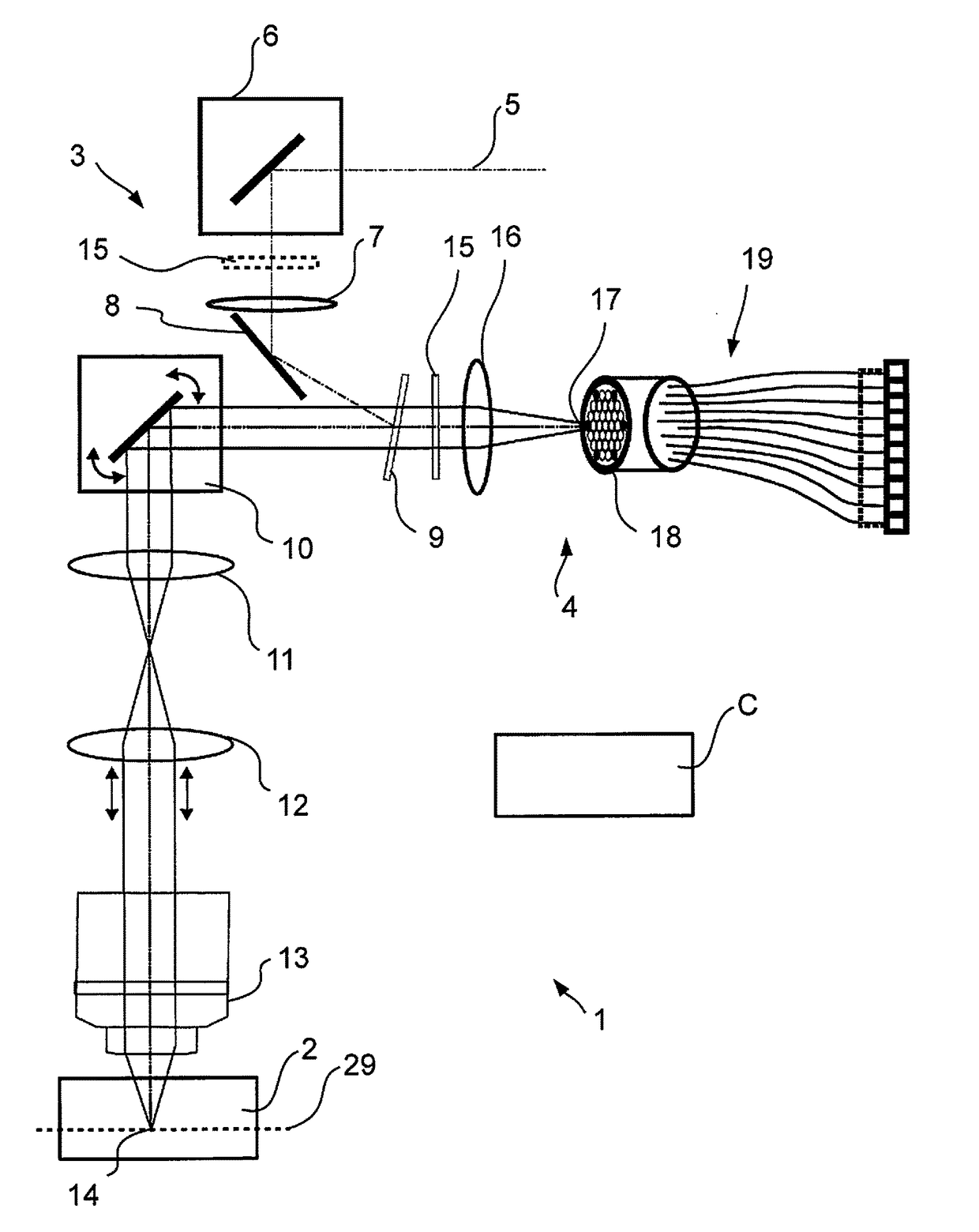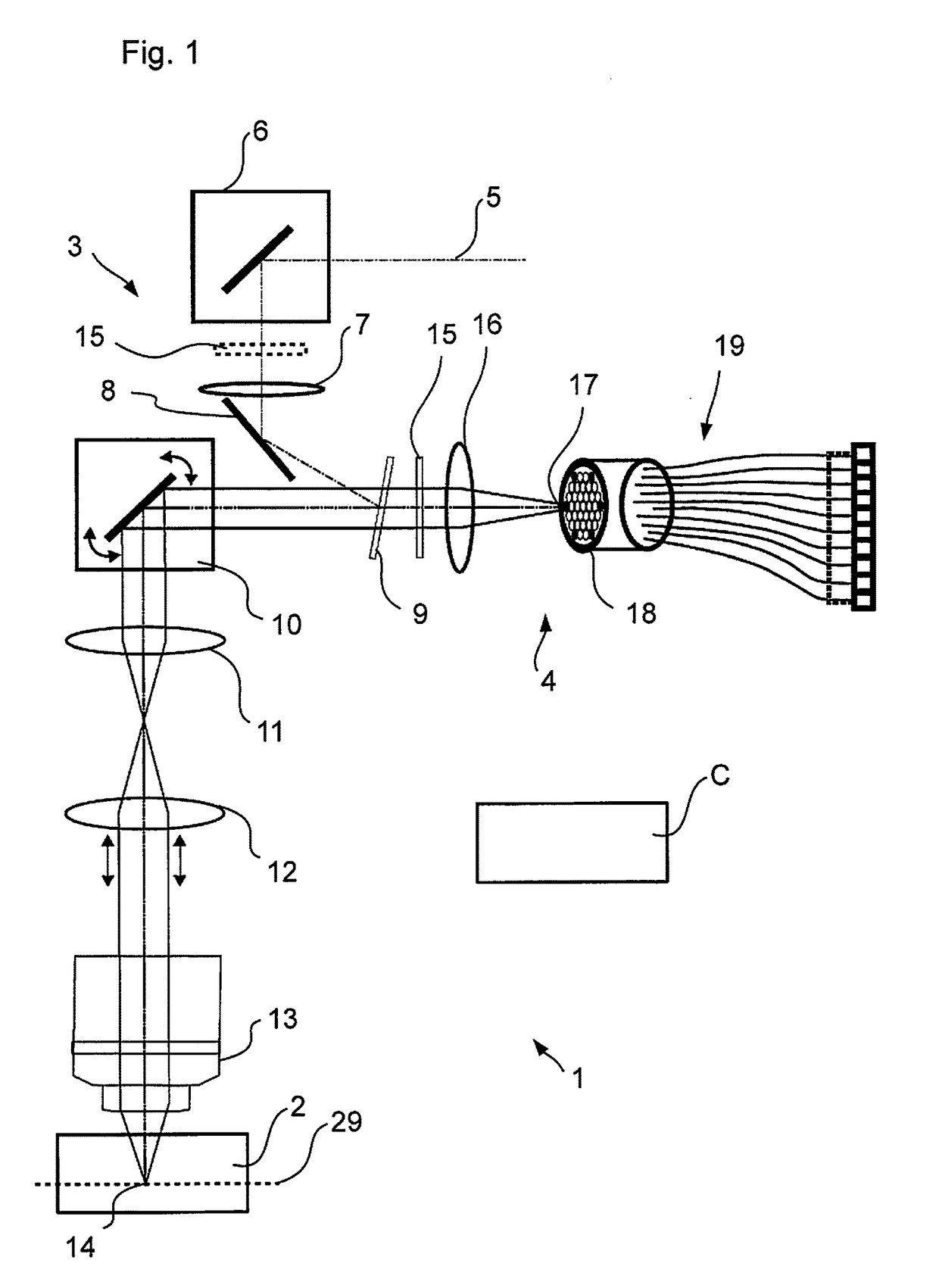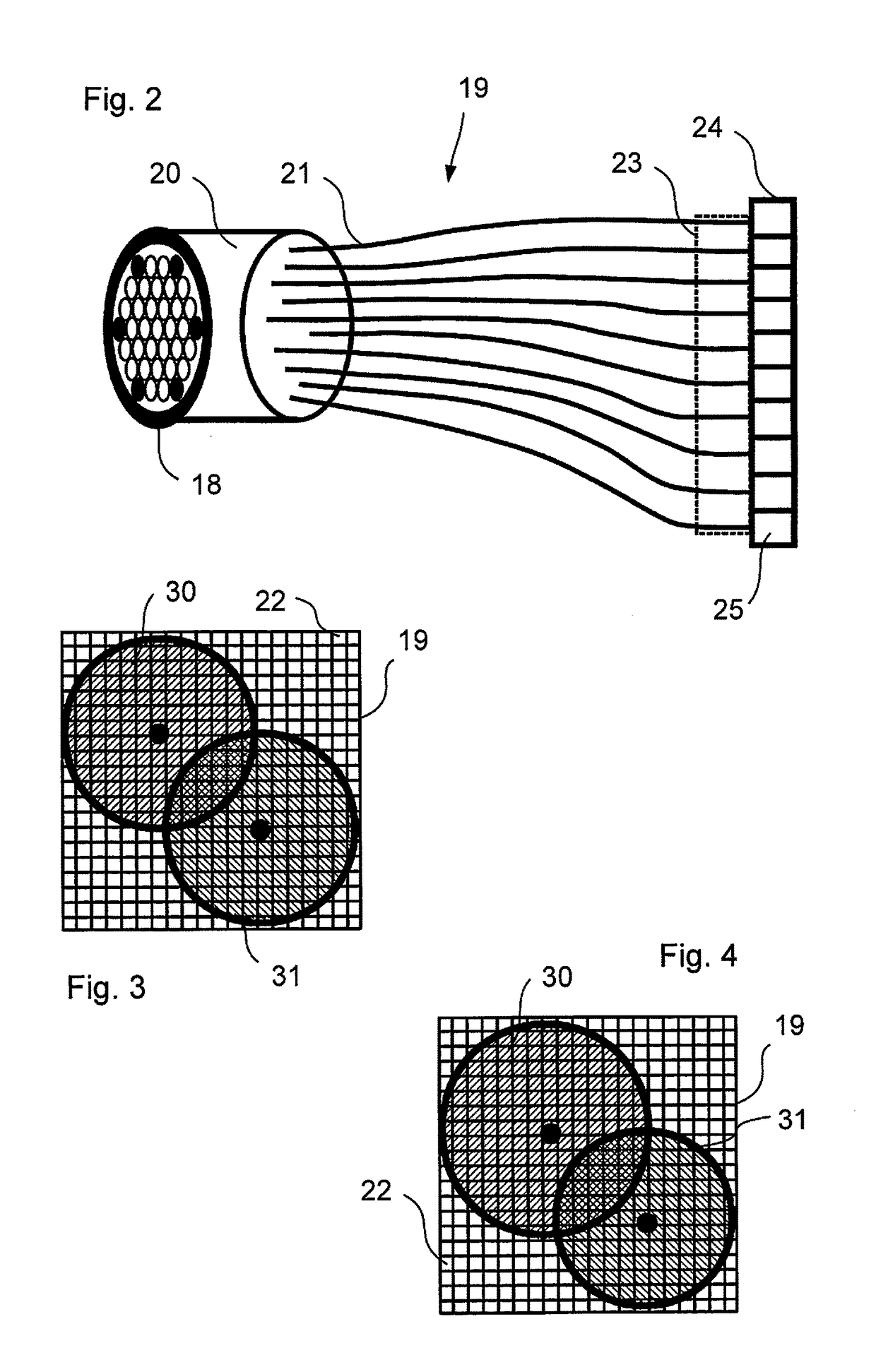High-resolution scanning microscopy with discrimination between at least two wavelength ranges
a scanning microscopy and high-resolution technology, applied in the field of high-resolution scanning microscopy, can solve the problems of reducing the resolution of light microscopes, significantly improving the resolution below the diffraction limit, and requiring a color splitter with a corresponding detector
- Summary
- Abstract
- Description
- Claims
- Application Information
AI Technical Summary
Benefits of technology
Problems solved by technology
Method used
Image
Examples
Embodiment Construction
[0039]FIG. 1 shows a laser scanning microscope 1 schematically that is adapted for microscopy of a sample 2. The laser scanning microscope 1 (abbreviated to LSM in the following) is controlled by a control device C and comprises an illumination beam path 3 as well as an imaging beam path 4. The illumination beam path illuminates a spot in the sample 2 and the imaging beam path 4 images this spot in a diffraction-limited manner for detection. Illumination beam path 3 and imaging beam path 4 share a lens system.
[0040]The LSM 1 illuminates the sample 2 by means of a laser beam 5 provided which is guided to a mirror 8 via an optional deflecting mirror 6 and a lens 7. The mirror 8 ensures that the laser beam 5 is incident on a coupling-in element, e.g., an emission filter 9, under an angle of reflection. For a clearer representation, only the main axis of the laser beam 5 is shown.
[0041]After reflection at the emission filter 9, the laser beam 5 is deflected biaxially by a scanner 10 and...
PUM
 Login to View More
Login to View More Abstract
Description
Claims
Application Information
 Login to View More
Login to View More - R&D
- Intellectual Property
- Life Sciences
- Materials
- Tech Scout
- Unparalleled Data Quality
- Higher Quality Content
- 60% Fewer Hallucinations
Browse by: Latest US Patents, China's latest patents, Technical Efficacy Thesaurus, Application Domain, Technology Topic, Popular Technical Reports.
© 2025 PatSnap. All rights reserved.Legal|Privacy policy|Modern Slavery Act Transparency Statement|Sitemap|About US| Contact US: help@patsnap.com



